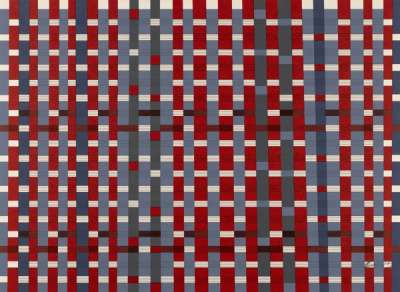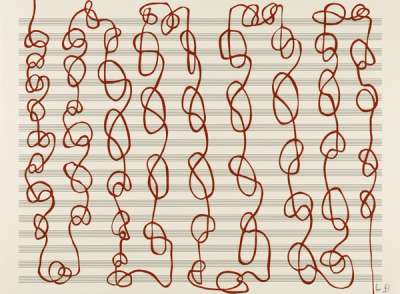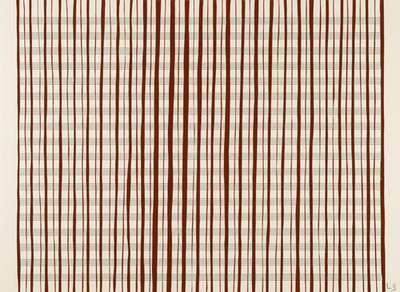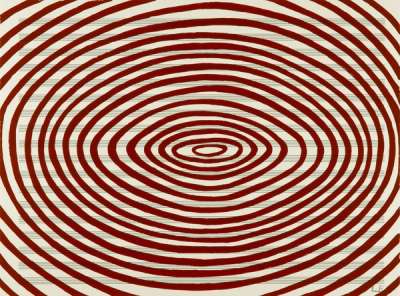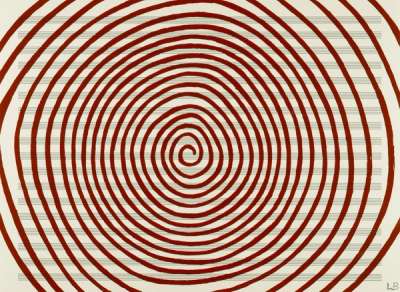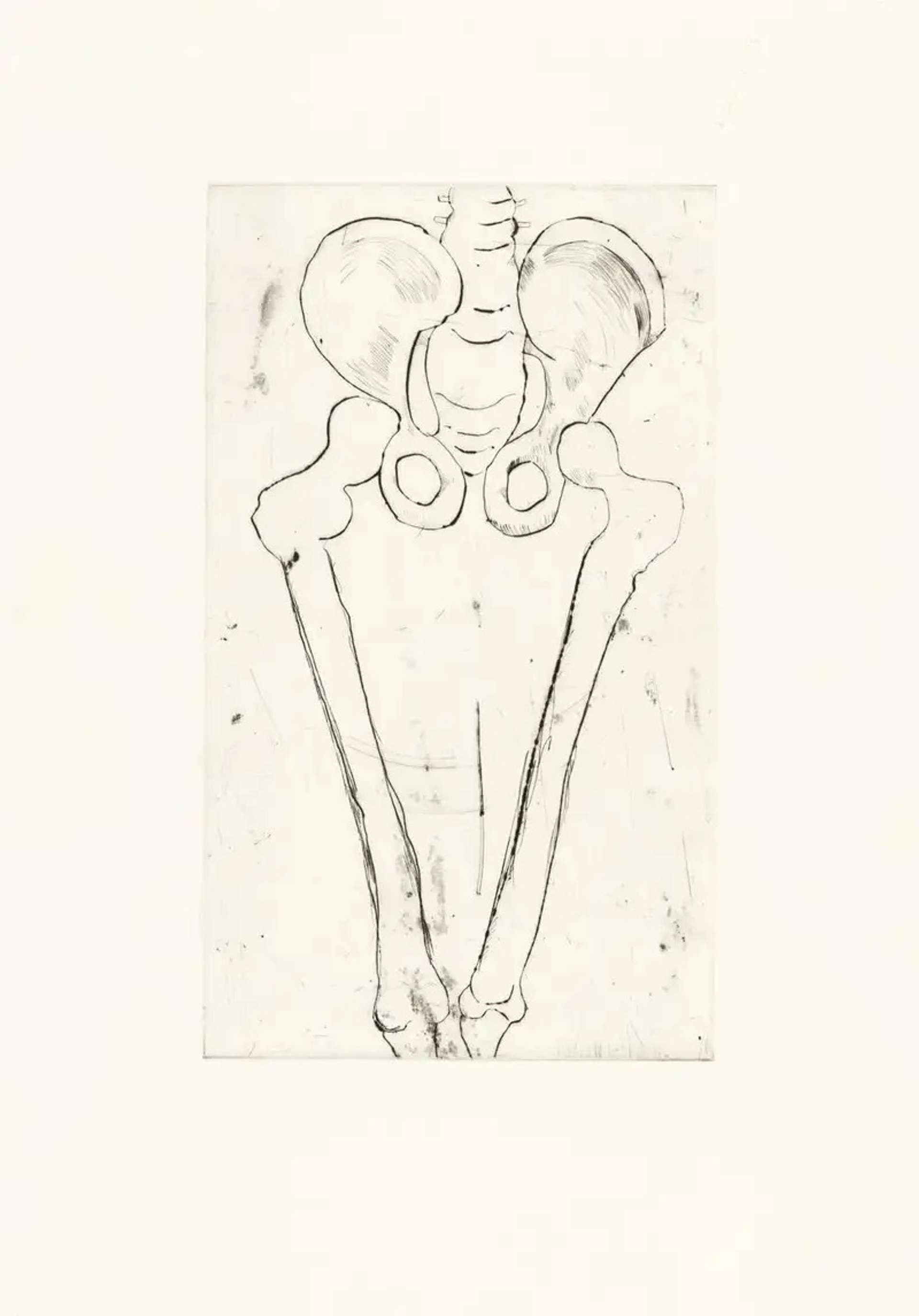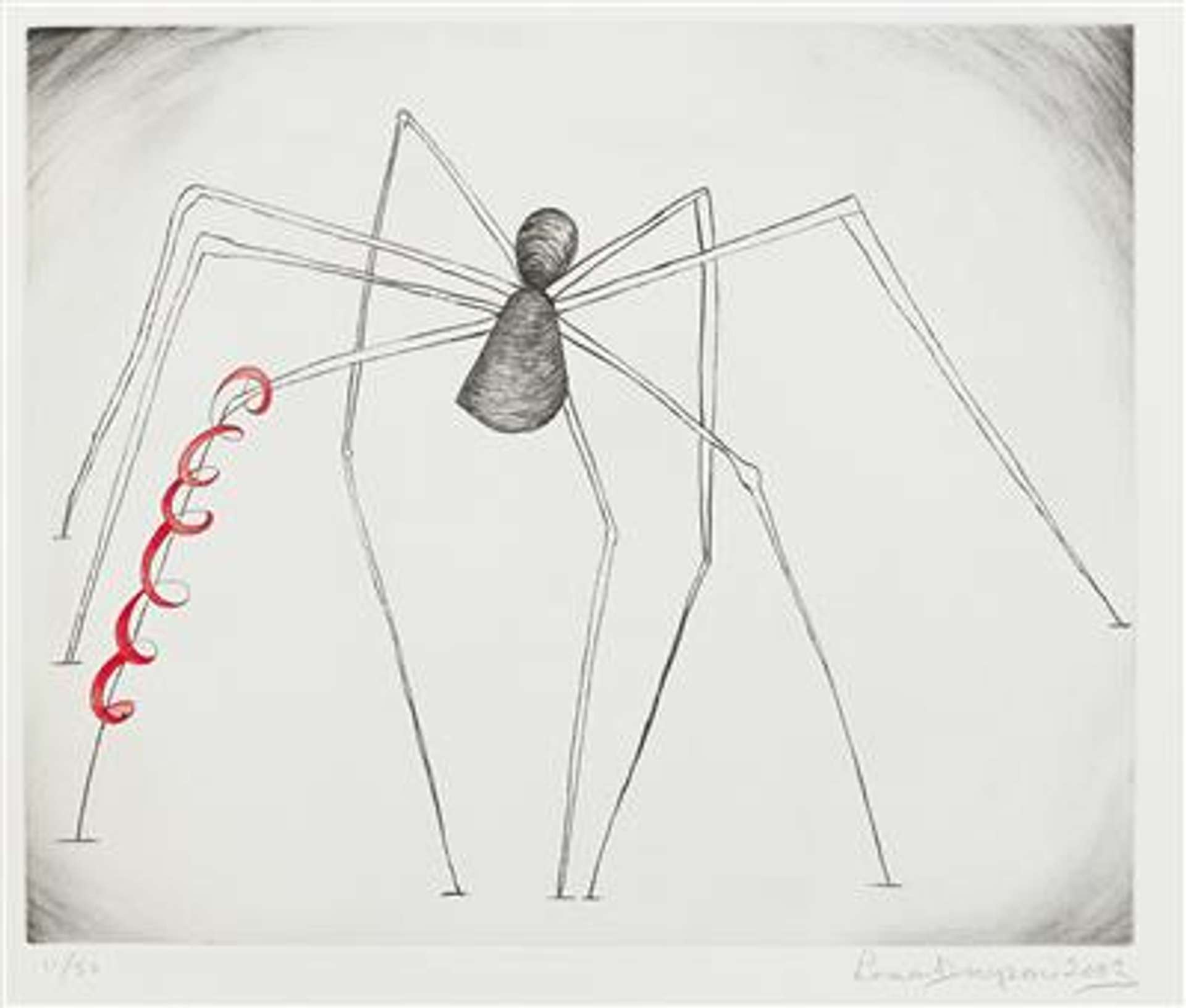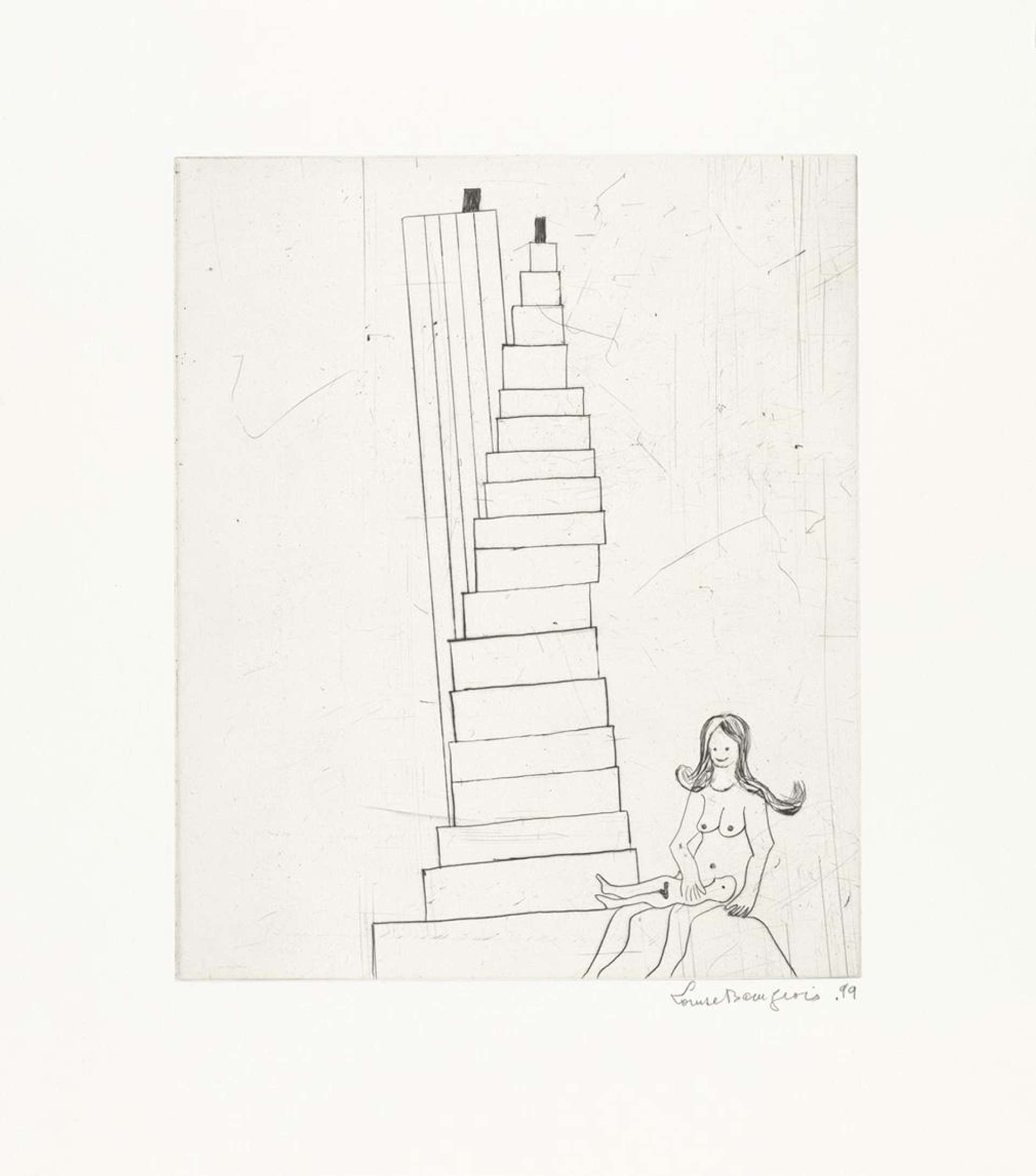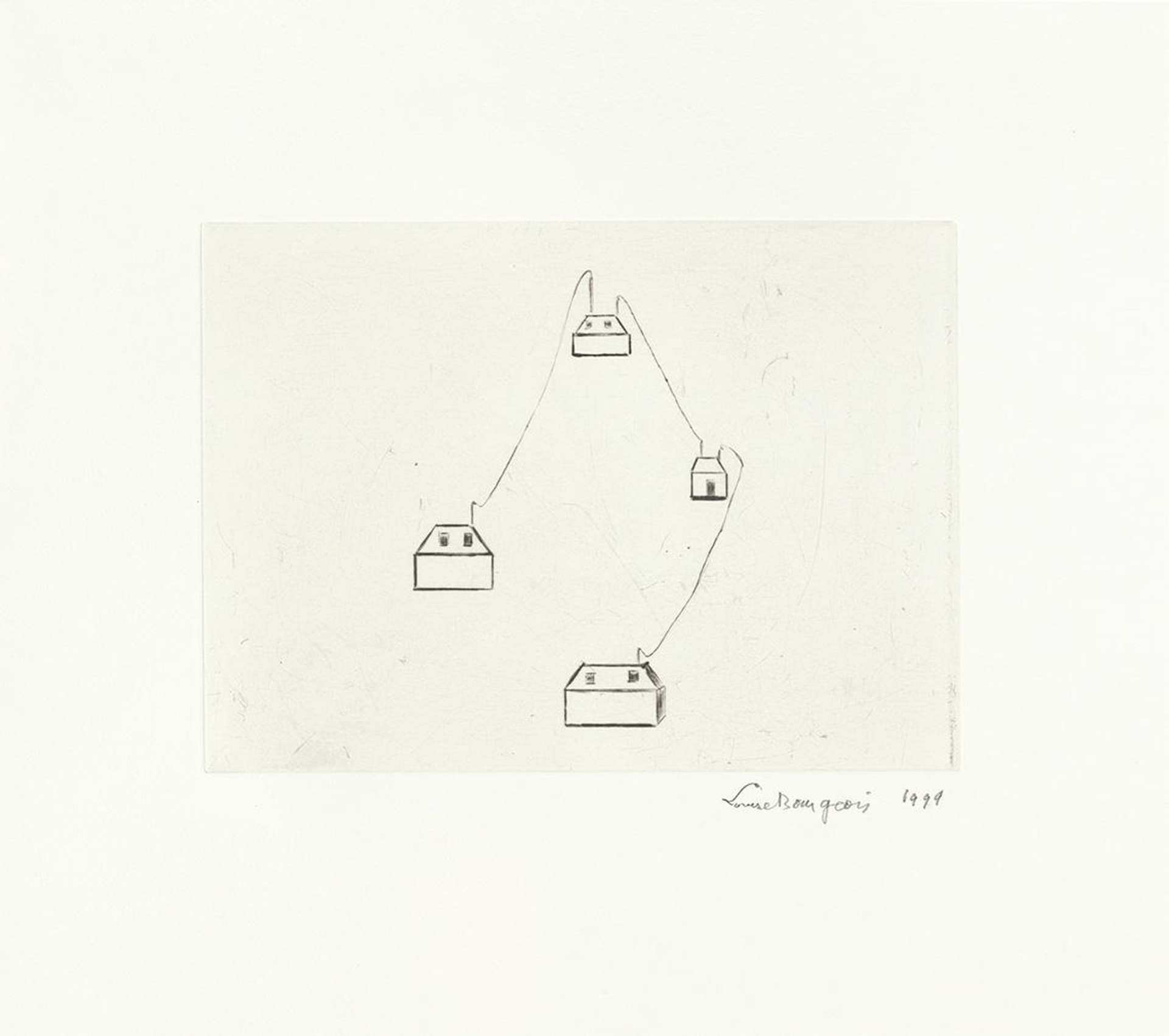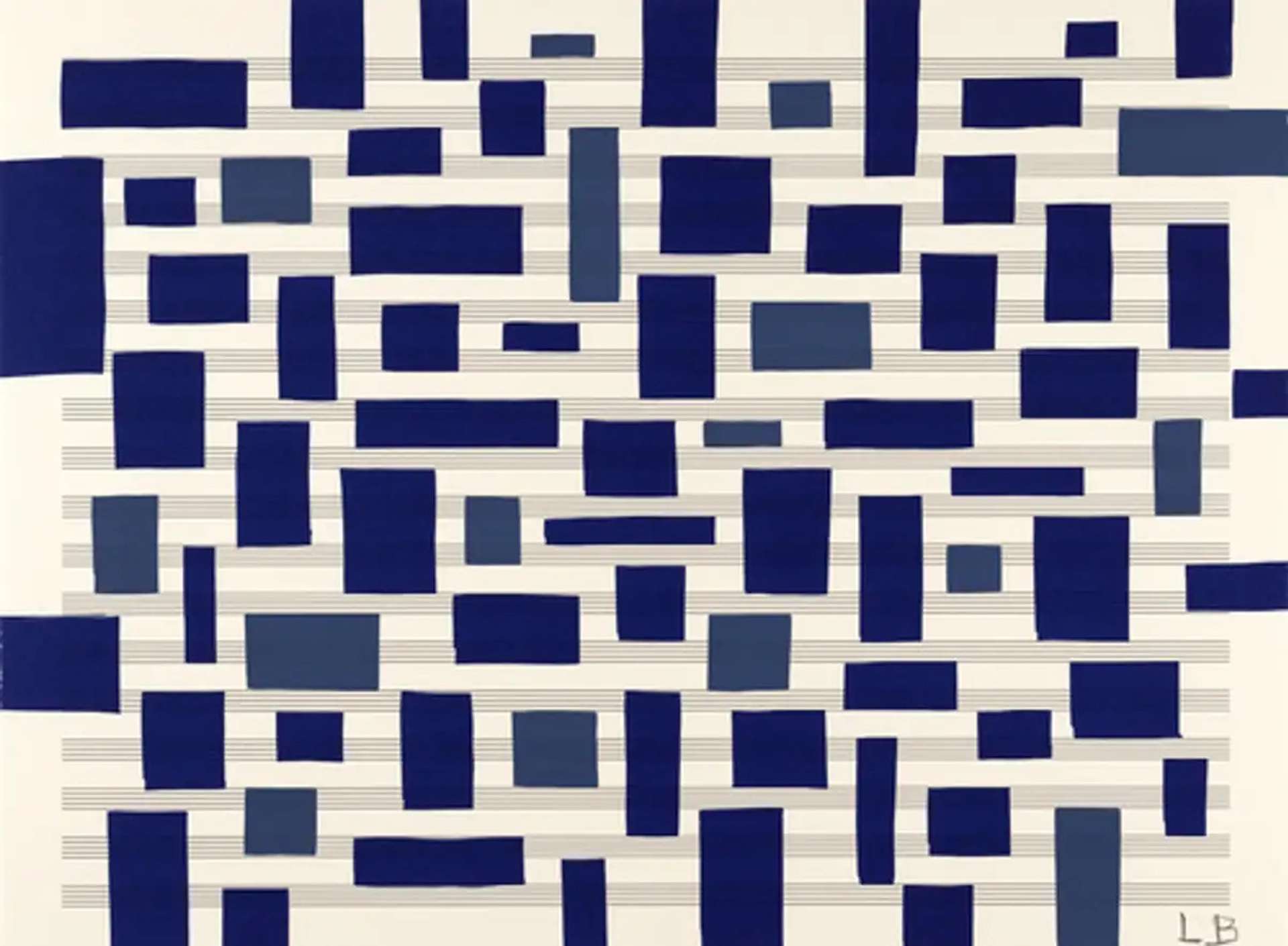 Untitled #15 © Louise Bourgeois 2005Untitled #15 © Louise Bourgeois 2005
Untitled #15 © Louise Bourgeois 2005Untitled #15 © Louise Bourgeois 2005
Leah Mentzis, Partnerships Manager[email protected]
Interested in buying or selling
Louise Bourgeois?
Louise Bourgeois's Fugue, a series of profound exploration of memory, emotion, and subconscious through the medium of lithography and screenprinting, presents a captivating visual narrative. Created initially in 2003 and transformed into lithographs by 2005, the series is defined by its unique use of music paper, blood-red spirals, geometric patterns, and minimalist shapes, alongside textual elements that offer intimate glimpses into Bourgeois's psyche. Employing repetition and variation akin to musical composition, Bourgeois crafts a multisensory experience that bridges the gap between art and music, inviting viewers into a deeply personal yet universally resonant dialogue with her intricate emotional landscapes.
Fugue was Transformed into Lithographs
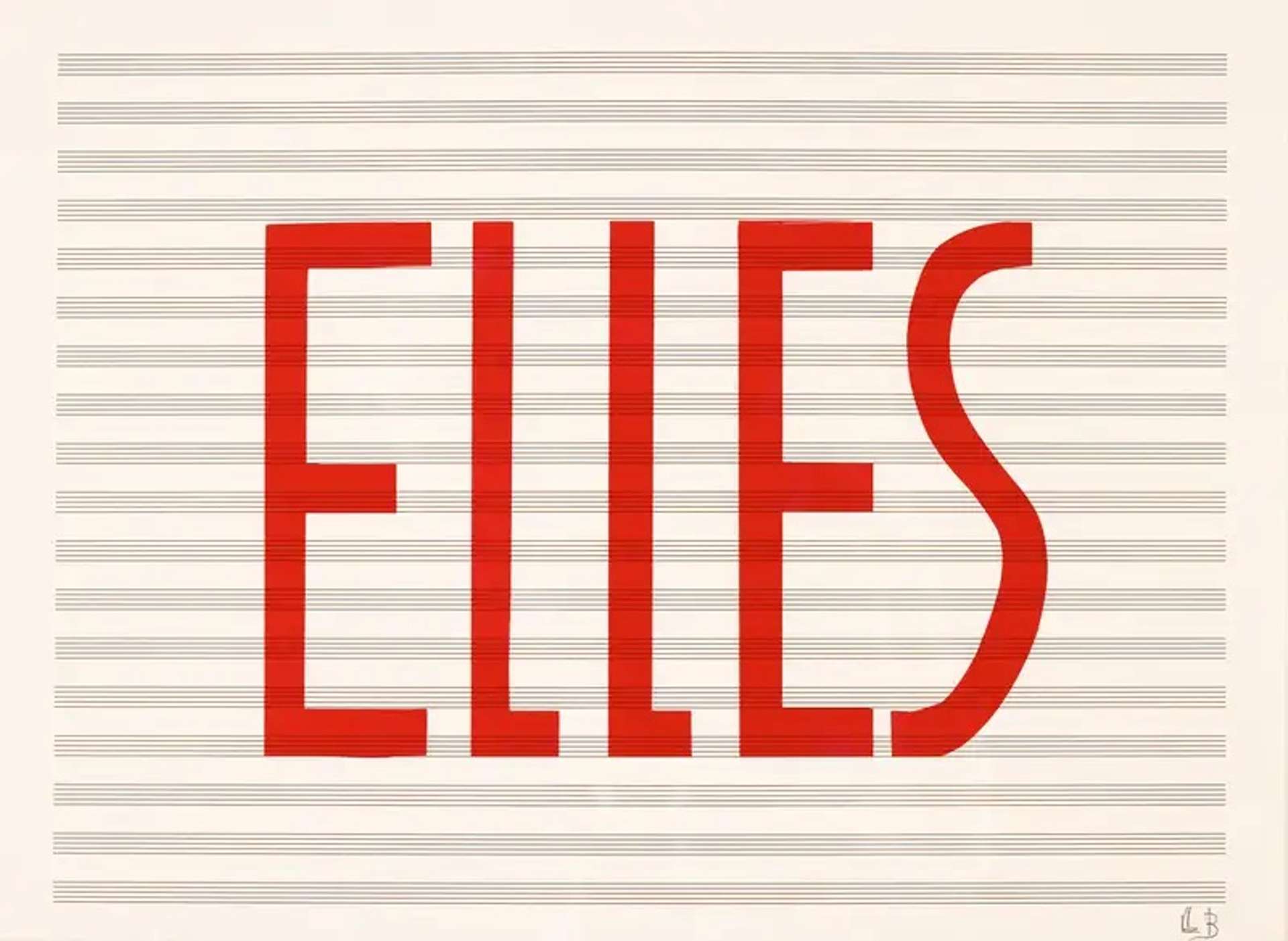 Untitled #6 © Louise Bourgeois 2005
Untitled #6 © Louise Bourgeois 2005Initially conceived by Bourgeois in 2003, Fugue underwent a transformative journey to become lithographs by 2005. This progression from original drawings to lithographic prints underscores the intricate process of translating Bourgeois's introspective and complex visual language into a form that captures the essence of the original works while making them accessible to a broader audience. The transition not only marks a significant moment in Bourgeois's artistic oeuvre but also reflects the evolving nature of her exploration of memory, emotion, and the subconscious.
Fugue is Defined by Music Paper
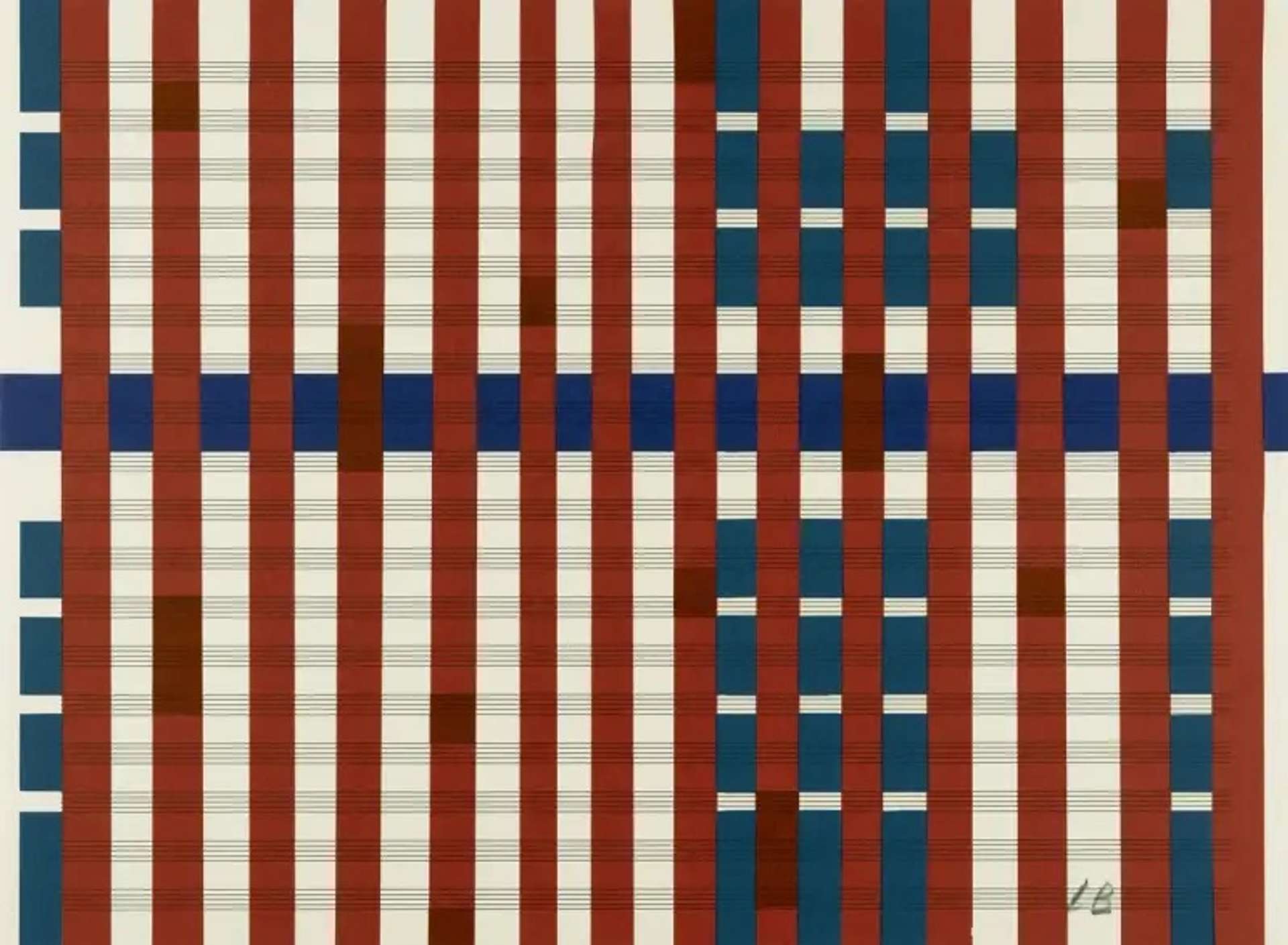 Untitled #18 © Louise Bourgeois 2005
Untitled #18 © Louise Bourgeois 2005The choice of music paper as the foundation for the nineteen drawings within the Fugue Series is a deliberate and defining characteristic of this body of work. Each sheet, originally intended to capture compositions of sound, is repurposed by Bourgeois to host her visual symphony, blending art and music's disciplinary boundaries. This innovative use of material enriches the series, embedding a rhythmic, almost melodic quality into the visual experience, while emphasising the layered complexity of Bourgeois's exploration of emotional landscapes.
Blood-Red Spirals and Geometric Patterns Characterise Fugue
 Untitled #15 © Louise Bourgeois 2005
Untitled #15 © Louise Bourgeois 2005The pervasive use of blood-red spirals and intricate geometric patterns is a hallmark of Bourgeois's Fugue series, serving as a visceral expression of her inner turmoil and psychological depth. These elements not only contribute to the aesthetic identity of the series but also encapsulate Bourgeois's exploration of the cyclical nature of emotions and the quest for order amidst chaos. The choice of a blood-red palette evokes a raw, primal energy, suggesting both the vitality and the violence inherent in the process of emotional and psychological excavation. Meanwhile, the integration of geometric patterns imposes a semblance of rationality and structure, creating a compelling tension between the instinctual and the intellectual.
Spiral Motifs Represent Bourgeois' Struggle with Chaos
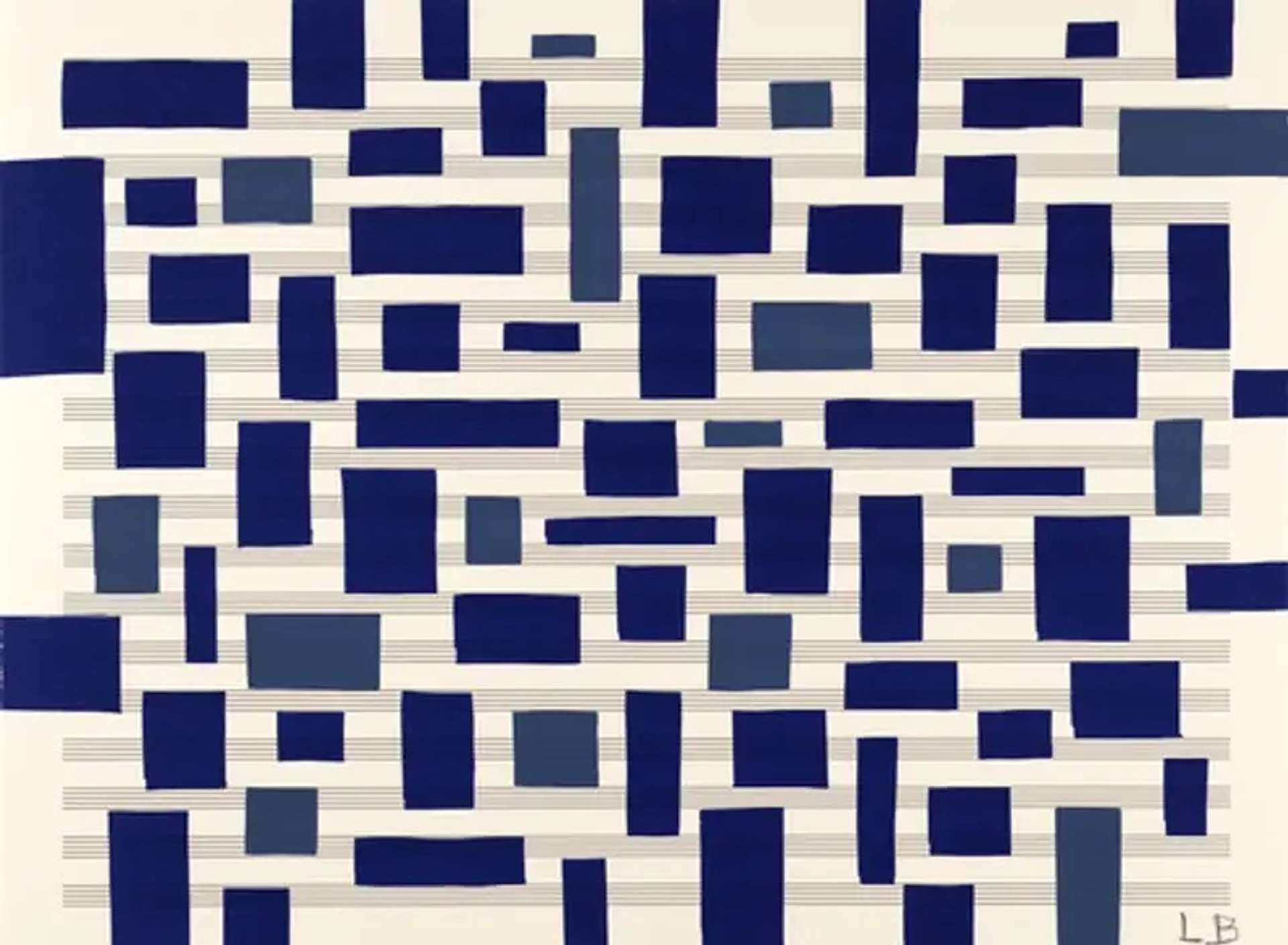 Untitled #16 © Louise Bourgeois 2005
Untitled #16 © Louise Bourgeois 2005The spiral motifs recurring throughout Fugue symbolise the artist's ongoing struggle to contain and make sense of chaos. These spirals – dynamic, enveloping, and often unsettling – serve as a metaphor for the whirlwind of emotions and memories that Bourgeois navigates in her work. By incorporating this form, she visualises the tension between the desire for control and the inevitable forces of disorder and complexity that characterise human experience. The spiral becomes a visual representation of Bourgeois's efforts to understand and articulate the chaotic undercurrents of her psyche, offering viewers a glimpse into the cyclical process of confrontation and reconciliation with one's inner turmoil.
Musical Staves and Spirals Mirror Emotional Structure and Spontaneity
 Untitled #2 © Louise Bourgeois 2005
Untitled #2 © Louise Bourgeois 2005In Bourgeois's Fugue, the juxtaposition of musical staves with undulating spirals creates a striking visual metaphor for the interplay between emotional structure and spontaneity. This contrast mirrors the dual aspects of the human psyche: the desire for order, represented by the rigid lines of the musical staves, and the inherent unpredictability of emotions, symbolised by the free-flowing spirals. Bourgeois's use of this imagery invites a reflection on the delicate balance between the need for emotional containment and the liberation of expressive, unstructured feelings. It reflects her understanding of the human condition as a constant negotiation between the organised and the organic, highlighting her ability to capture the complexity of emotional and psychological landscapes through her art.
Textual Elements Offer Glimpses into Bourgeois' Inner Thoughts
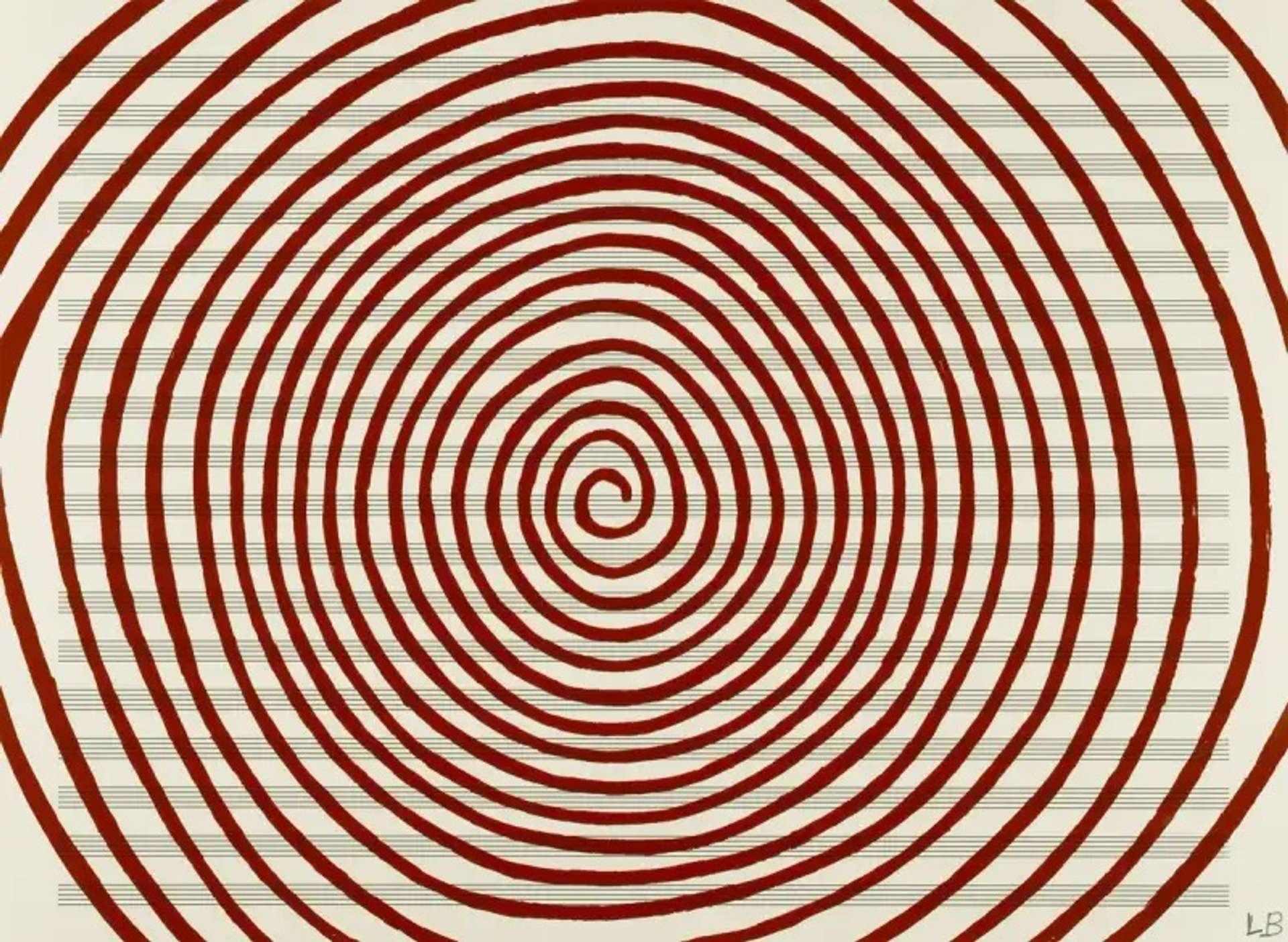 Untitled #11 © Louise Bourgeois 2005
Untitled #11 © Louise Bourgeois 2005The enigmatic textual elements interspersed throughout the series serve as cryptic windows into the artist's inner thoughts and emotional states. These words and phrases, though often elusive in their direct meaning, enrich the visual narrative with layers of personal significance and introspection. Bourgeois's inclusion of text invites viewers into a more intimate dialogue with her work, encouraging an exploration of the connections between language and visual expression. This approach allows for a multifaceted engagement with the artworks, where the interplay of text and image opens up avenues for interpretation and reflection. By integrating these textual components, Bourgeois not only underscores the complexity of her emotional and psychological landscapes but also highlights the power of words to evoke, conceal, and reveal, offering glimpses into the depths of her creative vision and the nuances of her human experience.
Minimalist Shapes Contrast with Complex Emotions
 Untitled #19 © Louise Bourgeois 2005
Untitled #19 © Louise Bourgeois 2005Bourgeois juxtaposes minimalist shapes – clean lines and geometric forms – against a backdrop of profound emotional complexity. This stark contrast distils the visual narrative to its core, directing attention to the delicate balance of form, colour, and texture. Such minimalism amplifies the series' exploration of deep-seated emotions, setting the stage for a nuanced dialogue between the simplicity of the external visual elements and the intricate internal landscapes of feelings and memories. This approach underscores the tension between what is seen and what is felt, spotlighting the multifaceted nature of human psychology through the lens of Bourgeois's artistry.
Fugue Mirrors Musical Composition Techniques
 Untitled #3 © Louise Bourgeois 2005
Untitled #3 © Louise Bourgeois 2005The strategic use of repetition and variation in Fugue is a nod to the principles of musical composition, particularly the structure of a fugue, where a theme is introduced and then developed through intricate variations. By applying this musical framework to her visual art, Bourgeois orchestrates a series where visual motifs recur with subtle alterations, imbuing the work with a rhythm and a sense of unfolding narrative that mirrors the layered complexity of a musical piece. This approach not only achieves thematic cohesion across the series but also enhances the dynamic interaction between the artworks, allowing each piece to resonate with the others while maintaining its distinct voice.
Fugue Explores Dual Realities
 Untitled #1 © Louise Bourgeois 2005
Untitled #1 © Louise Bourgeois 2005The interplay between abstract and realistic elements in Fugue masterfully explores the concept of dual realities. By blending identifiable forms with abstract patterns, Bourgeois invites the viewer to navigate the space between tangible experience and the intangible realm of emotion and memory. This juxtaposition acts as a visual metaphor for the complex layers of human consciousness, where external realities and internal landscapes coexist, revealing Bourgeois' investigation into the multifaceted nature of perception and existence.
Fugue Transforms the Mundane into Emotional Symbols
 Untitled #9 © Louise Bourgeois 2005
Untitled #9 © Louise Bourgeois 2005In Fugue, ordinary objects undergo a creative transformation to emerge as powerful symbols of emotional depth. This inventive approach allows everyday items to carry profound meanings, bridging the gap between the mundane and the metaphysical. Bourgeois' ability to imbue these objects with layers of emotion and narrative invites viewers to find significance in the familiar, challenging them to reconsider their relationships with the objects that populate their lives.


